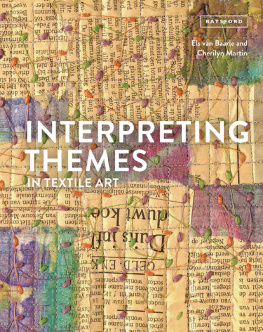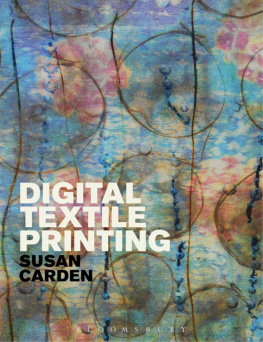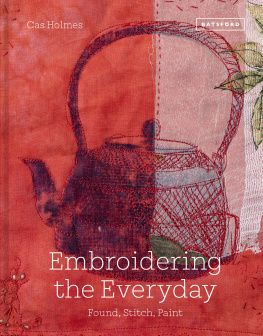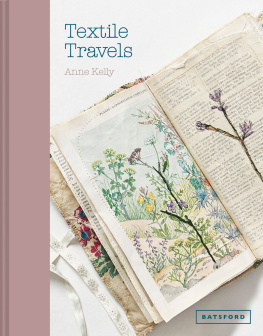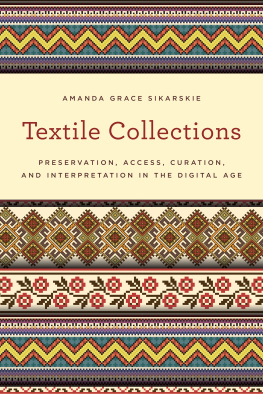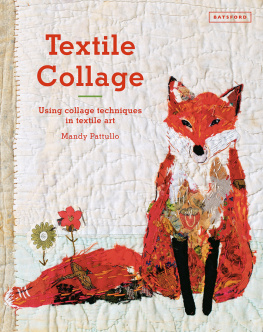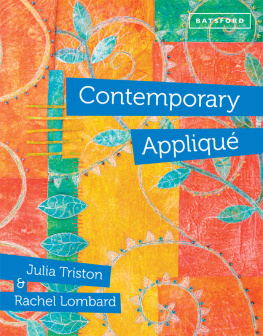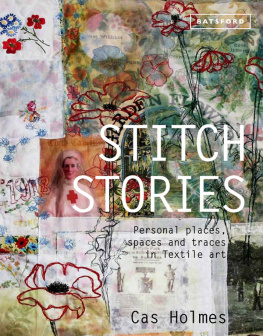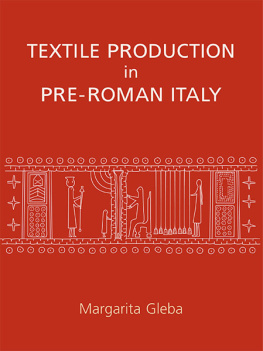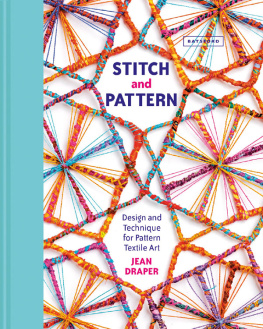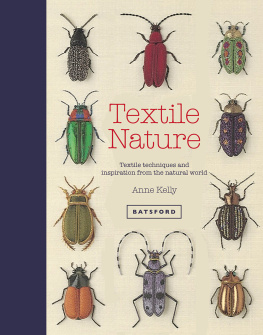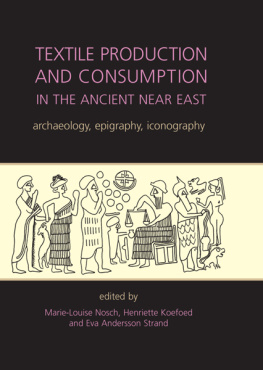INTERPRETING
THEMES
IN TEXTILE ART
Els van Baarle and
Cherilyn Martin

Contents
Foreword
The fibre art of Els van Baarle (NL) and Cherilyn Martin (UK/NL) spans more than two and a half decades and it represents a love affair with colour, images and textures on cloth, paper and other mixed media. Both have their own signature styles but when they co-exhibit, there is a natural synergy between their works that is evident each individual envisions a conceptual theme that complements the artwork of the other arist.
I had known of Elss and Cherilyns art practice for many years. In 2009 I met Els when she was a participating artist in the exhibition that I curated, ArtCloth: Engaging New Visions, which toured Australia until 2011. In September of 2011 I was delighted to meet both Els and Cherilyn who, along with myself, were workshop tutors at a five-day textile/fibre conference, Cloth Arts @ Hunters Hill, Sydney, organised by Glenys Mann of Fibre Arts Australia. Our paths crossed once again in October 2014 when I opened the exhibition, Memory Cloth Rememberings in Textile by four internationally renowned textile artists Els van Baarle, Cherilyn Martin, Cas Holmes and Glenys Mann at the Museum de Kantfabriek in Horst, the Netherlands. Els and Cherilyn have exhibited and given workshops in Europe, North America and Australasia, so they are well known across a myriad of artistic landscapes. Art-making as well as informing and teaching the current and next generation of artistic practitioners ensures that the techniques they have mastered and the concepts that they have explored will linger beyond their own generation.
Art can be created out of ignorance and by chance, but this book aims far higher. It aims to link your life experiences, your knowledge, your exploration of language, myths, cultures, symbols and motifs to your ability using fibre, and by fibre, I am using the broadest definition possible from cloth to paper to thread. Of course, in the process, colour and texture are an integral part of the development of a concept.
You need to be aware of all the rules and so the first chapter gives you a comprehensive compositional and optical road map, not to inhibit your creative processes but rather to make you conscious of which rule(s) you choose to break. To get the effect you have to know the cause! Imagery on fibre can be made incredibly smooth and flat, as were the painted and printed images created by Pop Artists such as Roy Lichtenstein in Drowning Girl (1963). On the other hand, fibre art can have texture, which gives it an extra dimensionality. explores the use of common found objects and how they can be incorporated into fibre artworks employing numerous surface-design techniques and concepts.
This book is special since it gives practical insights into creating complex imagery and texture using a large range of fibre material. The authors want to arouse your curiosity, and engage you in an artistic conversation where you, the reader, will understand what concepts and techniques in fibre art will work for your artistic expression. Sure you need to know the fundamentals, but in learning and exploring your art using this book you have fun as well!
I know you will enjoy this book as much as I have.
Marie-Therese Wisniowski
Studio Artist and Founder of Art Quill Studio and Art Quill & Co. Pty. Ltd.
Former Co-Editor Textile Fibre Forum art magazine
Casual Lecturer, Faculty of Education and Arts, The University of Newcastle, NSW, Australia
Complementary yet individual
Throughout the centuries there has been interaction between artists. Mutual respect, interest and admiration for other artists work has a positive effect. It becomes even more interesting when the themes they choose to work in parallel on a shared theme.
Two textile artists, Els van Baarle (NL) and Cherilyn Martin (UK/NL), met more than twenty-five years ago. Although they both have an individual approach to their work, a special bond was forged between them, fuelled by their intense interest in the same topics: the past, the passage of time, ancient cultures and marks left by Man are all subjects about which they are both passionate.
Both artists immerse themselves in their chosen themes, sometimes spending several years on the same subject. Consequently, works have evolved that are mature and have depth and meaning. Their interaction has culminated in several distinct exhibitions being shown both nationally and internationally.
The varied work of both these renowned artists is linked through the introspective interpretation of their theme.
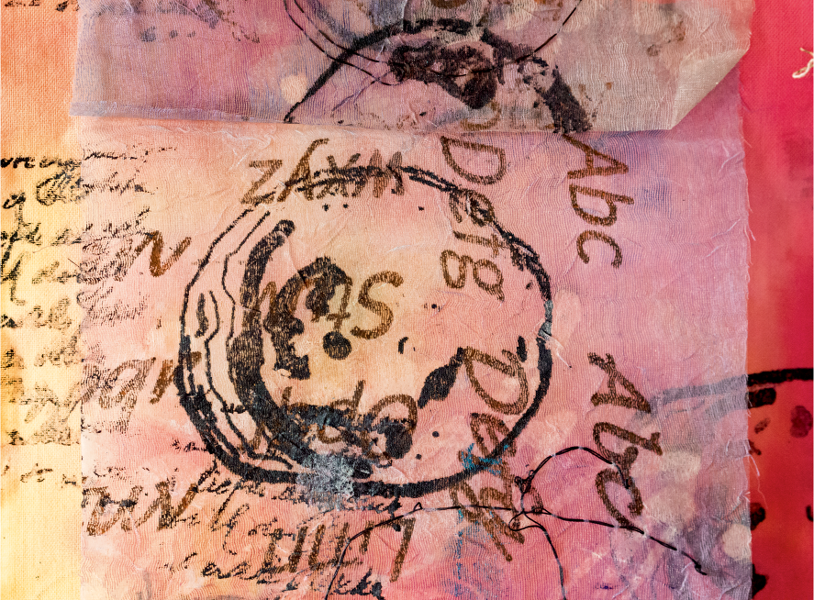
Detail of Aardappel II, Els van Baarl, 20 x 220cm (8 x 86in). Two layers of silk and cotton, wax, dye, print.
About the artists
Readers will be inspired as they immerse themselves in the art of Els van Baarle and Cherilyn Martin. Each themed exhibition they have worked on together has the subtitle: Two visions on a theme and it is always fascinating to see how two established artists tackle the same subject.
Els van Baarle www.elsvanbaarle.com
Textile artist specialising in contemporary batik, surface design and mixed media
Member of Steek Plus www.steekplus.nl
Windkracht 10 www.windkrachttien.blogspot.com
Cherilyn Martin www.cherilynmartin.com
Textile artist specialising in mixed media, experimental quilting and embroidery
Member of Quilt Art www.quiltart.eu
Windkracht 10 www.windkrachttien.blogspot.com
Both artists are members of IAPMA (International Association of Hand Papermakers and Paper Artists) www.iapma.info
They are internationally renowned tutors with experience of teaching in the USA, Australia, New Zealand, Canada and throughout Europe.

Memory Cloth #5, 110 x 110cm (43 x 43in), Cherilyn Martin. German Paradekissen, rusting, screen printing, machine stitching.
How to use this book
Most artists have lots of ideas for their work sometimes too many so that they can no longer see the wood for the trees. This book is intended to give all artists a helping hand by showing the approach adopted by Cherilyn Martin and Els van Baarle. The concept Two visions on a theme is at the heart of this book. Both artists show how they work individually and have their own vision and way of developing a commonly chosen theme.
Through regular contact each artist learns about the others ideas and their way of developing the theme. This is not true collaboration in the sense of working together on one piece of work, but rather each artist makes her own way along the same path. This form of collaboration strengthens their approach.
The hope is that by showing Cherilyns and Elss individual interpretations of the themes the reader will be encouraged to develop their own interpretation.
The content of work has always been important to Cherilyn and Els; introspection, life experiences and personal interpretations are present in all of their textile art. They do not strive to make decorative pieces, but to produce work which is autonomous and has meaning. They hope to encourage the reader to adapt this same approach, and to develop work beyond technique and materials.
Cherilyn and Els both love the meditative processes of hand embroidery and layering with wax and dye because they offer time for reflection. Working on a theme forces you to focus longer on one topic, so that it becomes impossible to be satisfied with just one solution.

